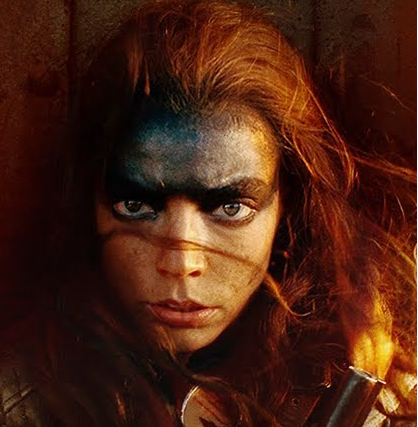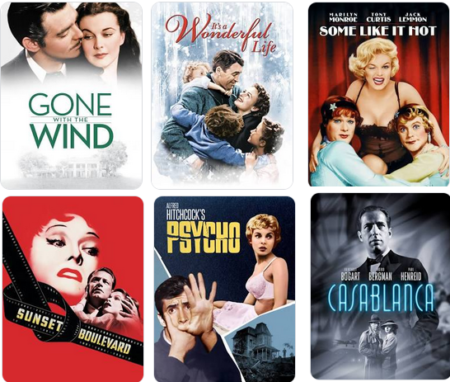Welcome to the world of Goodfellas, where the allure of organized crime and the gritty underworld collide to create a cinematic masterpiece. Martin Scorsese’s iconic film has swept audiences off their feet since its release in 1990, and its popularity shows no signs of waning. From its captivating storyline to its flawless performances, Goodfellas continues to be a timeless classic that transcends generations. In this blog post, we will delve into the depths of Goodfellas,
exploring all the answers and best ideas for online enthusiasts like yourself. Whether you’re a die-hard fan or a newcomer to the world of Henry Hill and his mafia cohorts, get ready to embark on an exhilarating journey filled with riveting revelations and fascinating insights.
Table of Contents
But what sets Goodfellas apart from other mob films? What makes it so enduringly captivating that even after three decades, it still commands the attention of audiences worldwide? It all starts with Scorsese’s masterful storytelling and his unparalleled ability to immerse viewers in the ruthless, yet enthralling world of organized crime. From the opening scene to the closing credits, every frame of Goodfellas is infused with a raw energy that keeps you on the edge of your seat.
Throughout this blog post, we will dissect the various elements that make Goodfellas a cinematic triumph. We’ll explore the unforgettable performances of Robert De Niro, Joe Pesci, and Ray Liotta, and how their characters bring the narrative to life. We’ll also delve into the film’s meticulously crafted screenplay and its brilliant use of music to heighten the drama and tension. So, whether you’re a fan of crime dramas, a movie buff in search of a new obsession, or just looking for a thrilling escape from reality, this blog post is your ultimate guide to Goodfellas. Get ready to immerse yourself in the world of wise guys, as we uncover all the answers and best ideas for online enthusiasts like yourself.

Why is Goodfellas so good and why should I watch it?
Goodfellas is not just a movie; it’s an experience. From the moment the film begins, you are transported into a world of crime, loyalty, and betrayal. The storytelling is masterful, with Martin Scorsese’s direction capturing every nuance and detail of the mafia lifestyle. The characters are complex and compelling, drawing you in with their charisma and unpredictability.
One of the reasons why Goodfellas is so highly regarded is its authenticity. The film is based on the true story of Henry Hill, a former mobster turned informant. Scorsese’s attention to detail in recreating the time period and depicting the inner workings of organized crime is unparalleled. Every scene feels genuine, immersing you in a world that few have ever witnessed firsthand.
Another aspect that sets Goodfellas apart is its stellar cast. Robert De Niro delivers a powerhouse performance as Jimmy Conway, a seasoned gangster who commands respect and fear. Joe Pesci’s portrayal of Tommy DeVito is chillingly intense, earning him an Academy Award for Best Supporting Actor. And Ray Liotta shines as Henry Hill, taking us on a journey from wide-eyed young recruit to jaded informant.
The film’s pacing is also worth mentioning. Scorsese expertly builds tension throughout the narrative, keeping you engaged from start to finish. The use of voiceover narration by Henry Hill adds an extra layer of depth to the story, providing insights into his thoughts and motivations.
If you’re a fan of crime dramas or simply appreciate exceptional filmmaking, Goodfellas should be at the top of your must-watch list. It offers an immersive experience that will leave you captivated long after the credits roll.
What crime family is Goodfellas based on?
Goodfellas is based on the true story of Henry Hill and his involvement with the Lucchese crime family. The Lucchese family was one of the five major mafia families in New York City during the late twentieth century. Led by boss Paul Vario, the Lucchese family had a significant presence in various criminal activities, including gambling, loan sharking, and drug trafficking.
In the film, Henry Hill becomes associated with Jimmy Conway (based on real-life mobster James Burke) and Tommy DeVito (based on Thomas DeSimone). Together, they navigate the treacherous world of organized crime, rising through the ranks and becoming entangled in a web of violence and deceit.
While Goodfellas focuses primarily on Henry Hill’s experiences within the Lucchese family, it also provides glimpses into other criminal organizations such as the Gambino and Genovese families. These families were part of a complex network that controlled various aspects of illegal activities in New York City during that time.
By basing Goodfellas on real events and characters, Martin Scorsese adds an extra layer of authenticity to the film. It allows viewers to gain insight into a world that is often glamorized or sensationalized in popular culture.
Which movie has shown best life of a gangster Scarface or Goodfellas Why?
The debate between Scarface and Goodfellas as to which film best portrays the life of a gangster is one that has raged among movie enthusiasts for years. Both films are considered classics in their own right, but they offer distinct perspectives on organized crime.
Scarface, directed by Brian De Palma and released in 1983, tells the story of Tony Montana (played by Al Pacino), a Cuban immigrant who rises to power in the drug trade in Miami. The film is known for its over-the-top violence, iconic quotes, and larger-than-life characters.
On the other hand, Goodfellas takes a more grounded approach to depicting the mafia lifestyle. Directed by Martin Scorsese and released in 1990, it is based on the true story of Henry Hill and his involvement with the Lucchese crime family. Goodfellas offers a more realistic portrayal of organized crime, focusing on the day-to-day operations and interpersonal dynamics within a criminal organization.
While Scarface may be more flashy and stylized, Goodfellas excels in its attention to detail and authenticity. The film delves into the intricacies of mob life, showcasing the loyalty, violence, and consequences that come with it. The performances in Goodfellas are also widely praised for their realism and depth.
In the end, whether you prefer Scarface or Goodfellas comes down to personal preference. Both films have their merits and offer unique perspectives on the gangster genre. However, if you’re looking for a film that provides a gritty and authentic portrayal of organized crime, Goodfellas is hard to beat.

Why does racism appear in Goodfellas?
Racism is an unfortunate reality that permeates many aspects of society, including organized crime. In Goodfellas, racism appears as a reflection of the time period and cultural attitudes prevalent within the mafia community during that era.
The film takes place primarily in New York City during the 1960s through 1980s when racial tensions were high. The Italian-American mafia operated within a predominantly white community where racist beliefs were not uncommon. This is evident in certain scenes where racial slurs are used casually or derogatory comments are made about individuals from different ethnic backgrounds.
It’s important to note that the portrayal of racism in Goodfellas is not meant to glorify or condone such behavior. Rather, it serves as a realistic depiction of the attitudes and prejudices that existed within the mafia world at that time.
By including instances of racism in the film, Martin Scorsese highlights the flawed nature of these characters and their environment. It adds another layer of complexity to their personalities and serves as a reminder that even within criminal organizations, discrimination and prejudice can exist.
Ultimately, Goodfellas uses racism as a tool to paint a more accurate picture of the mafia lifestyle and the societal context in which it operated. It serves as a reminder that no matter how glamorous or intriguing organized crime may seem on the surface, it is still rooted in a world tainted by bigotry and intolerance.
Why is it that I can watch Goodfellas over and over and never get tired of it?
The enduring appeal of Goodfellas lies in its timeless storytelling, impeccable performances, and attention to detail. The film has an undeniable quality that keeps viewers coming back for more, even after multiple viewings.
One reason why Goodfellas remains endlessly rewatchable is its fast-paced narrative. The film wastes no time in immersing you into Henry Hill’s world, taking you on a rollercoaster ride through his rise and fall within the mafia. The pacing keeps you engaged from start to finish, with each scene seamlessly transitioning into the next.
The performances in Goodfellas are also top-notch. Robert De Niro, Joe Pesci, and Ray Liotta deliver career-defining performances that bring their characters to life with an intensity rarely seen on screen. Their chemistry is palpable, creating memorable moments that stay with you long after the credits roll.
Furthermore, Goodfellas is a masterclass in filmmaking. Martin Scorsese’s direction is flawless, with every shot and edit serving a purpose. The use of music, particularly the iconic soundtrack featuring classic songs from the era, adds another layer of depth to the film and enhances its impact.
Goodfellas also rewards repeat viewings by offering subtle details and nuances that may have been missed on the first watch. Scorsese’s attention to detail is impeccable, with each frame filled with visual cues and foreshadowing that enrich the viewing experience.
In short, Goodfellas is a cinematic masterpiece that continues to captivate audiences because of its compelling narrative, exceptional performances, and meticulous craftsmanship. It’s a film that reveals something new with each viewing and leaves you craving more.
Is Goodfellas worth watching now?
Absolutely! Goodfellas remains as relevant and impactful today as it was when it was first released in 1990. Its themes of loyalty, betrayal, and the allure of power are timeless and continue to resonate with audiences across generations.
The film’s storytelling prowess is unmatched. Martin Scorsese’s direction keeps you on the edge of your seat from start to finish, weaving together a narrative that explores the complexities of organized crime while delving into the psyche of its characters.
Goodfellas also boasts an ensemble cast at the top of their game. Robert De Niro, Joe Pesci, Ray Liotta, and supporting actors like Lorraine Bracco deliver performances that are nothing short of extraordinary. Their portrayals bring depth and authenticity to their respective characters.
Beyond its technical brilliance, Goodfellas offers valuable insights into human nature and the consequences of choices made in pursuit of power. It serves as a cautionary tale, reminding us of the dangers of succumbing to the allure of a life of crime.
Whether you’re a fan of crime dramas, a cinephile looking for a classic to add to your watchlist, or simply someone who appreciates exceptional filmmaking, Goodfellas is well worth your time. Its impact on cinema and popular culture cannot be overstated, and it continues to be celebrated as one of the greatest films ever made.
How accurate is Martin Scorsese’s film Goodfellas to actual Mafia lifestyle and activities in New York City during the late twentieth century?
Goodfellas is widely regarded as one of the most accurate portrayals of the mafia lifestyle and activities in New York City during the late twentieth century. Martin Scorsese’s attention to detail and his commitment to authenticity make the film an invaluable resource for understanding this dark chapter in American history.
The film is based on Nicholas Pileggi’s book “Wiseguy,” which tells the true story of Henry Hill’s life as a mobster turned informant. Scorsese worked closely with Pileggi during the production process, ensuring that every aspect of Goodfellas remained faithful to real events and experiences.
From the language used by characters to their mannerisms and even their clothing, every detail was meticulously researched and recreated. Scorsese also consulted with individuals who had firsthand knowledge of organized crime during that era, further enhancing the film’s accuracy.
Goodfellas offers an unflinching look at the inner workings of organized crime, including its hierarchical structure, criminal activities such as extortion and drug trafficking, and even its rituals and codes of conduct. The film does not shy away from depicting violence or exploring the moral ambiguity that comes with living a life steeped in criminality.
While some aspects of the film may be dramatized for narrative purposes, the overall portrayal of the mafia lifestyle in Goodfellas is widely regarded as authentic. It provides a rare glimpse into a world that few have experienced firsthand and offers valuable insights into the workings of organized crime during that time.
How much of Goodfellas is based on real events? What are some inaccuracies in the film?
Goodfellas is based on the true story of Henry Hill and his involvement with the Lucchese crime family. The film remains largely faithful to real events, but like any adaptation, there are certain liberties taken for dramatic effect.
One notable inaccuracy in Goodfellas is the portrayal of Tommy DeVito’s death. In reality, DeVito (based on Thomas DeSimone) was murdered by mobsters due to his erratic behavior and violent tendencies. However, in the film, DeVito’s death is depicted as a result of a dispute with fellow gangsters during a card game.
Another discrepancy lies in the character of Paul Cicero (based on Paul Vario), who serves as a mentor figure to Henry Hill. In real life, Vario was much more involved in criminal activities and had a more prominent role within the Lucchese family than depicted in the film.
Additionally, some minor details may have been altered or condensed for storytelling purposes. However, these changes do not significantly impact the overall accuracy or authenticity of Goodfellas as a portrayal of organized crime during that era.
It’s important to remember that while Goodfellas strives for accuracy, it is still a work of fiction based on real events. The primary goal of Martin Scorsese and his team was to create an engaging and compelling narrative that captured the essence and atmosphere of Henry Hill’s life within organized crime.

What is the main conflict through the film Goodfellas? It seems more of a documentation of life rather than a story of a protagonist proceeding through an ongoing conflict.
Goodfellas takes a unique approach to storytelling by presenting itself as more of a documentation of life within the mafia rather than following a traditional narrative structure with a clear protagonist and ongoing conflict. The film offers an immersive experience that allows viewers to witness the rise and fall of Henry Hill and his associates without relying on traditional plot devices.
The main conflict in Goodfellas can be seen as Henry Hill’s struggle to balance his loyalty to the mafia with his desire for a normal, law-abiding life. Throughout the film, we see Henry torn between these two worlds, as he becomes increasingly disillusioned with the violence and chaos that comes with being involved in organized crime.
While there may not be a central external conflict driving the plot, Goodfellas excels in capturing the internal conflicts faced by its characters. The film explores themes such as loyalty, betrayal, and the consequences of one’s actions. It delves into the moral ambiguity that comes with living a life steeped in criminality and showcases how these conflicts ultimately lead to Henry’s downfall.
By presenting itself as more of a documentation or slice-of-life portrayal, Goodfellas offers viewers an unfiltered look into this world without relying on contrived plot devices. It immerses us in the day-to-day operations of organized crime while highlighting the personal struggles faced by its characters.
How accurate is GoodFellas about life in the mafia? Are some parts exaggerated for entertainment purposes, and what are some examples from the movie itself?
GoodFellas is widely regarded as one of the most accurate depictions of life within organized crime. However, like any film, certain parts may be exaggerated or altered for entertainment purposes.
One example of exaggeration in GoodFellas is the character of Tommy DeVito, played by Joe Pesci. While DeVito is based on a real-life mobster named Thomas DeSimone, his portrayal in the film emphasizes his violent and unpredictable nature. Some argue that this characterization may have been exaggerated for dramatic effect.
Another aspect that may be slightly exaggerated is the level of glamour associated with the mafia lifestyle. While GoodFellas does not shy away from depicting the violence and moral ambiguity that comes with organized crime, it also showcases the material wealth and social status that can accompany such a life. This balance between glamorizing and condemning organized crime adds to the complexity of the film.
Additionally, some minor details or events may have been condensed or altered to fit within the narrative structure of the film. However, these changes do not significantly impact the overall accuracy or authenticity of GoodFellas as a portrayal of life in the mafia.
Ultimately, GoodFellas strikes a delicate balance between realism and entertainment value. It offers viewers an immersive experience into a world few have witnessed firsthand while still delivering an engaging and compelling narrative.
https://7artmovie.com/goodfellas-cinematic-masterpiece-1/
https://7artmovie.com/goodfellas-answers-2/
https://www.imdb.com/title/tt0099685/





